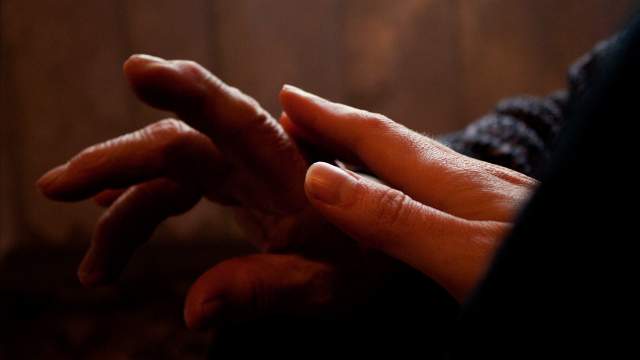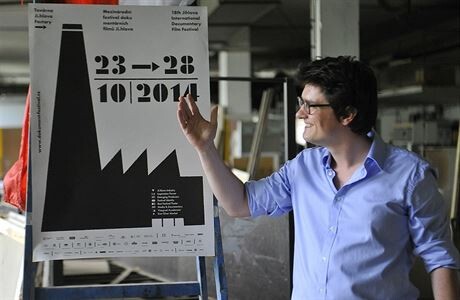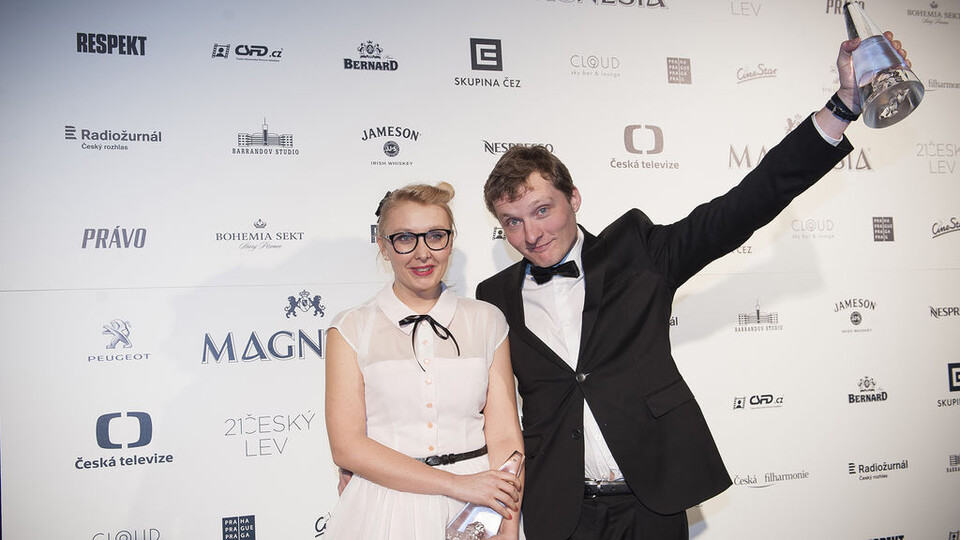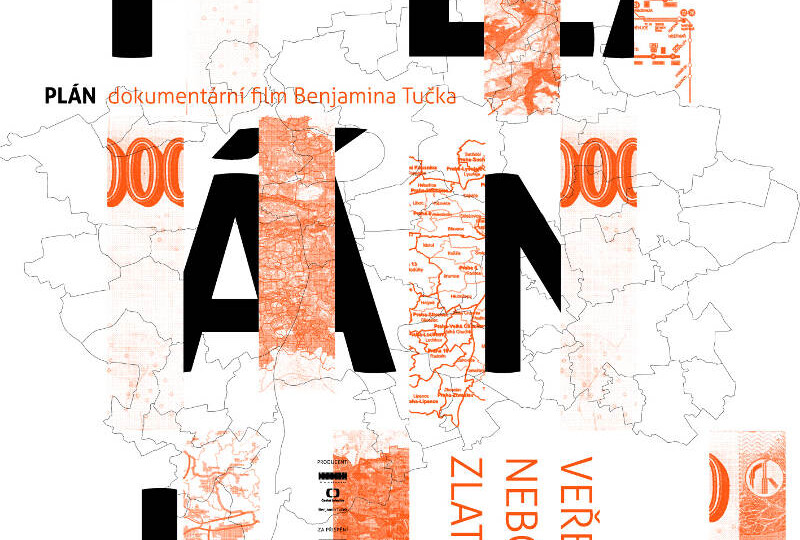Festivals always have to be on the side of the artists
Czech Joy program section at the IDFF Jihlava focuses on creative documentaries every year. What was the criteria according to which you chose films this year?
Czech Joy presents a wide range of bold original films, with an emphasis that they be premiered at the festival. It is not a summary of past production, but instead it is a foreshadowing of future production. It has become a tradition, in that to a certain extent it confronts the work of the generation of emerging producers who are graduating or have recently graduated from FAMU, with the production of directors older than them by a generation or two. FAMU is an exceptional island, not only due to its outstanding pedagogic leadership. It is a kind of film accelerator. Usually it takes two, three, four years to make a documentary film, in comparison to that at FAMU the students produce one film per year. Only a few people are capable of keeping up a similar pace in the future while adhering to the same open conditions for the creation of films.
Cinematographic pluralism in Czech Documentaries
Are there any noticeable key trends in Czech production? Have you noticed that compared to previous years the emerging producers belong to a specific generation of filmmakers?
It is interesting to see how the youngest generation of filmmakers, represented by Lukáš Kokeš with Klárou Tasovská, Petr Hátle and Viera Čákanyová is changing. In this sense, the film project Gottland does an excellent job of capturing the generational change in Czech film. The creators met with pedagogues only a couple years older than themselves at FAMU, for example Vít Klusák, Martin Mareček and Vít Janeček. For that specific reason they have tried to define their own style of production and notion of film. It is a very interesting dialog that highlights the liveliness of the Czech contemporary documentary scene, although by documentary scene we perhaps mean the scene originating at the Prague FAMU. It is a dispute concerning the form of films, a dispute that is not trying to define only one form, but a dispute trying to set a cinematographic plurality. The dialog is one between the situational and cinematic approach, but this is just a simplification, a metaphor.
Does it have anything to do with technological changes that mainly feature and documentary films are going through?
I think that this kind of a dispute can be traced back to the beginning of film. But of course, digitalization- which takes place both at shooting and consequently distribution- is important particularly because of its openness, but also because of the tribulation of change. It really shook the ground beneath the film industry. Documentarians made most of the chaos and emerged with an unprecedented freedom. In addition the camera itself influences the esthetic and dynamic of shooting. Similarly like in the sixties, when thanks to the hexadecimal camera, filming left the studio, today cameras in iPhones and compacts are pushing films into a corner. The future lies in “selfie films”, a continuation of ego-documentaries, filmed on video cameras- enhanced with a large dose of dynamics, spontaneity, familiarity and perfect color.. But be warned, in its time video served the purpose perfectly and today it belongs to sources of found-footage. The consequent technology advance perhaps lies in a camera embedded into an eye, something like Google glass. But we will see…

Felvidék - Caugh in between
Between the Seas 2014: A year of breakthrough
Another key program section is the competition for Central and Eastern European films Between the Seas. To what extent is it easy for you to acquire strong titles at the expense of larger festivals, to which a number of filmmakers from our region go?
In this sense, this year is a breakthrough year. The program of the competitive section Between the Seas is a presentation of the latest filmmaking accomplishments, which will have their world, international or European premier. Again, we are not talking about one exceptional title, but a prestigious collection. The prestige does not stem from exclusive titles, but their unusual quality.
Do you think that the films that made it to the final selection for Between the Seas are similar thematically or in form? According to what criteria did you pick the films?
For us today the field of documentary cinema is the freest field of cinematography. Fortunately, this also applies to films from Central and Eastern Europe, which are, after, all created in more difficult conditions compared to West ern Europe. At the same time, filmmakers from Eastern Europe see themes around them and do not have to travel thousands of kilometers because of films. The world is becoming smaller, but the coming together can be seen in the familiarity of everyone. Directors also offer a wide range of political and historical topics, personal essays, reflections on state bureaucracy and systems, but also existential issues associated with the finality of life.
Sections Between the Seas and Czech Joy are crucial for the festival. What is your idea of how competing titles will continue to resonate after the festival?
Film festivals play two key roles in this. The first is the discovery factor, which will through feedback help the filmmaker in his journey. This is due to the fact that festival programmers have one of the largest continuities of contemporary film production. Annually, we watch hundreds and thousands of films, and it is much easier for us to find films, which are trying out a new approach, new topic, and manage to find a personal perspective. The second role of festivals is to act as career accelerators for individual creators and impact the distribution of their work. In this regard, Jihlava will play a key role in a national context, when in reality two thirds of films in the competing Czech section make it to national film distribution. On an international level, the festival program is watched by tens, hundreds of programmers from around the world and they work with it according to their needs. Some further promote films that we premiered; others focus on working with talented directors we discovered. In any case, the competitive sections Between the Seas is unprecedented and together with the market East Silver they offer a unique look at contemporary Eastern European cinema.
Jihlava on the map of Europe
The festival has a specific program for film professionals. What do you think is missing in the contemporary documentary film industry? What would the festival like to help promote and develop in this sense?
From the beginning Jihlava is building and growing in uncharted and empty territory. While most festivals have to compete, we try to see what is missing. At the very beginning, it was necessary to dedicate the competitive section to Eastern European documentaries. The East Silver market focuses on this region, there is a focus on the world experimental scene and the portal for distributing documentaries on the internet DAFilms.com. Projects that are developing from the festival industry activities over the last couple of years originate on current issues. Every year we see thousands and thousands of films, but there is only a small amount of the truly original and bold ones. Usually they made a mistake at the beginning by being poorly thought out or they don’t have a bold conclusion. Therefore, we initiated the creation of the Inspiration Forum, a platform for creators and audience, which discovers a raw and everyday reality. The project Emerging Producers emphasizes the role of producers and it wants to encourage them to step out of dramaturgical and financial stereotypes- in a certain way it is going against workshops, which teach you how the system works. This of course is good to know, but what often happens is that the attendees of workshops forget, why and what kind of films they wanted to make at the beginning. Pragmatism prevails. The third key point of the festival is the meeting between festival directors and programmers, surprisingly, it is a rare opportunity to meet colleagues, discuss and share the best.
The film industry is going through a radical change, which will be discussed at various panels and the industry section. The distribution methods are changing, as is the cinema institution, the acquisition strategy of television stations and so on. In which direction do you want the festival to go at such rough times? What is it that festivals should represent in the future?
Festivals always have to be on the side of the artists. There is no reason why film should not survive for centuries, similar to literature or art. This is a perspective, which is always important to festivals. Financially successful films will flow like water in a rainy season through the cinemas. However, festivals should discover underground currents. Compared to comedies and detective movies, people did not stand in queues to see director Jan Němec’s work in the sixties, but it still represents Czech cinema worldwide. It withstood the test of time, like many others. To look for such films and filmmakers, to give them confidence, give them a reason to continue, connect them with an open audience, is the most important role of film festivals.
Translated by Floriana Skorulska



